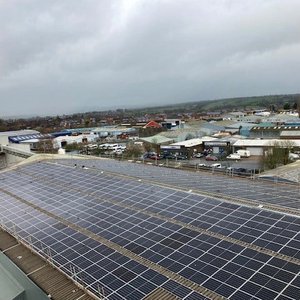The Marine Stewardship Council (MSC) announced that the U.S. Atlantic menhaden and U.S. Gulf of Mexico menhaden fisheries have entered the evaluation process in order to acquire the respected blue ecolabel for sustainable fishing. The assessments are being conducted by third-party independent auditors SAI Global at the request of Omega Protein.
Atlantic menhaden (Brevoortia tyrannus) are small, oily fish that are caught commercially in a fish meal and fish oil fishery and a bait fishery. They appear in estuaries and coastal waters from northern Florida to Nova Scotia. While considered unfit for direct human consumption, menhaden caught via the modern purse seine method are used in fish meal and fish oil for human and animal nutrition, due to their high natural concentration of healthy omega-3 fatty acids.
Gulf menhaden (Brevoortia patronus) have a similar biology to Atlantic menhaden and are also caught in both a fish meal and fish oil fishery and a bait fishery. They have a Gulf-wide range, from the Yucatan Peninsula in Mexico, across the western and northern Gulf to eastern Florida.
Between the Atlantic and Gulf Coasts, the U.S. menhaden fishery is the second largest in the country by weight, trailing only Alaska pollock. The purse seine fishery is notable for being extremely clean; according to the National Oceanic and Atmospheric Administration’s Chesapeake Bay Office, it is “one of the most selective, and effective fisheries,” as evidenced by an insignificant bycatch.
Commercial landings of Atlantic menhaden peaked in the 1950s, while commercial landings of Gulf menhaden peaked in the early 1980s. Harvest levels of menhaden have significantly decreased, essentially tracking fishing effort, since those high points, and the most recent stock assessments of Gulf menhaden and Atlantic menhaden confirm that neither species is undergoing overfishing or being overfished.
“The MSC blue ecolabel is the gold standard for sustainable fishing worldwide,\" said Ben Landry, the Director of Public Affairs for Omega Protein. \"We are extremely proud of the work we’ve done to conduct our fishing operations sustainably, and we’re excited to share this work with the auditors as they undertake this assessment to the MSC Standard. We are confident that the menhaden fishery will meet the MSC Standard, recognizing its advances in responsible harvesting methods as we continue to pursue the most sustainable fishing practices available.”
“We welcome the U.S. Gulf of Mexico and Atlantic menhaden purse seine fisheries’ decision to enter MSC assessment,” said Eric Critchlow, MSC U.S. program director. “This is an important milestone for the MSC and for fishing in the United States.”
The MSC Fisheries Standard is designed to assess the sustainability of fishery practices and management methods. The standards used to evaluate fisheries have been developed in deliberation with scientists, industry, and conservation groups, and reflect the most up-to-date fisheries science and management practices.
The assessment is being carried out by the certification body SAI Global Assurance Services and has an expected completion date of December 2017. The MSC assessment process is open for public input. Those interested in the menhaden fishery can participate by contacting Jean.Ragg@saiglobal.com.










